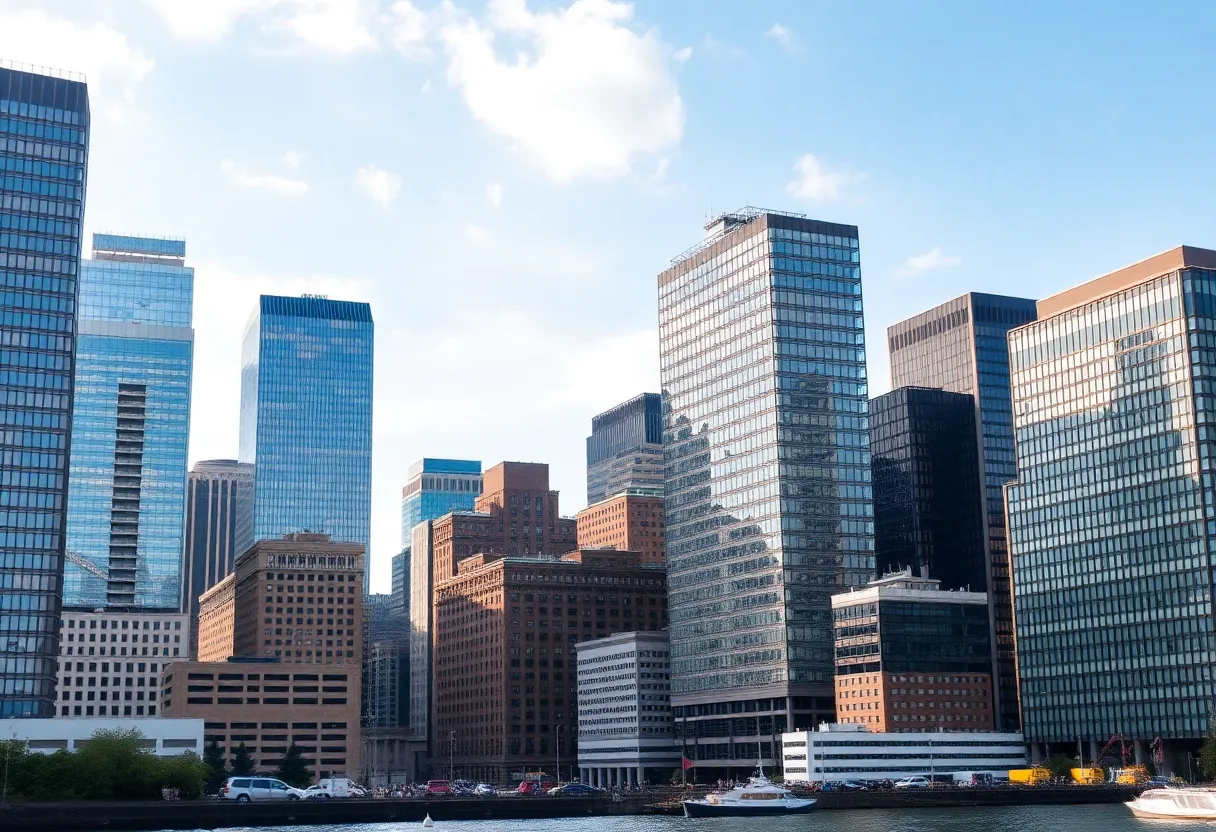News Summary
Despite a significant increase in vacancy rates to 17.1%, Boston’s office market continues to thrive with rising rents averaging $47 per square foot. While the national vacancy rate has also increased to 19.7%, the investment activity in the Northeastern region remains vibrant, with Manhattan leading in sales. Interestingly, Boston has recently experienced its first positive office absorption in over two years, indicating a potential turnaround. However, the local office visitation recovery is slower than in other major U.S. cities, highlighting ongoing challenges in the tech sector.
Boston’s Office Market: Resilience in the Face of Rising Vacancy Rates
Boston, the vibrant heart of New England, is experiencing a fascinating twist in its office market. With a current vacancy rate of 17.1%, up a striking 490 basis points from last year, one might think this city is facing a rough patch. However, when we take a closer look, it becomes clear that Boston remains one of the tightest office markets in the U.S..
Rising Rents Amidst Higher Vacancies
Even though office spaces are sitting empty, the average rent in Boston has climbed to $47 per square foot, reflecting year-over-year growth. This uptick is quite impressive, especially when we glance over at neighboring cities. Just to put things in perspective, Manhattan, known to be the most expensive office market in the nation, has an average rent of $68.93 per square foot. Yet, they faced a 3.6% decrease in rents over the same period. On the other end of the spectrum, Philadelphia stands out as the most affordable office market in the Northeast with an average rent of $30.86 per square foot.
Investment Activity is Buzzing
The Northeastern region shows a flurry of activity in office investment. Manhattan leads the pack, boasting a stunning $1.8 billion in office sales by early 2025, a sharp jump from just $77 million the previous year. Properties in Manhattan have also become hot commodities, commanding about $450 per square foot in sales prices, indicating that there’s still plenty of demand out there, despite some challenges.
New Jersey isn’t far behind, ranking fourth in total office sales nationally with $409 million in transactions this year and an average sale price of $179 per square foot. On a broader scale, the national office vacancy rate has crept up to 19.7%, marking an increase of 180 basis points year-over-year, but the average office listing rates have also increased by 5.7%, now sitting at $33.41 per square foot.
Office Space Under Construction and Developer Optimism
As for the future, developers seem to be holding onto a glimmer of optimism. There’s currently a whopping 48.6 million square feet of office space under construction across the nation, representing 0.7% of the total office stock. In fact, the national development pipeline for future office projects is projected to hit 2.6% of total stock by the end of the cycle.
However, it’s worth noting that office constructions have taken a dip, hitting a 10-year low in 2024, with just 11.3 million square feet of new projects kicked off. This trend highlights a cautious approach by developers responding to shifting market dynamics.
Challenges in Boston’s Downtown
Adding to the local narrative, the One Lincoln office building in Boston recently faced a tumultuous auction with no bidders showing interest at a starting bid of $500 million. Eventually, it was sold off to a lender for $400 million in a credit bid, drawing attention due to its previous ties with State Street Corp. The building suffered major vacancy losses, starting with State Street’s relocation and exacerbated by reduced occupancy from WeWork.
On a brighter note, Boston’s downtown office market has finally recorded its first positive absorption in over two years, with a net gain of 30,941 square feet of occupied space tracked by CBRE. Moreover, the amount of office space available for sublease in Boston is also trending downward, currently sitting at 4 million square feet, down from a record high of 4.8 million square feet.
Shifting Dynamics in Work Culture
Despite these positive signs, Boston’s office visitation recovery seems to be lagging compared to other major U.S. cities. This slower pace is largely attributed to the city’s higher concentration of tech occupations, where companies are taking their time to enforce in-office work mandates.
In summary, Boston’s office market is a vivid tapestry of challenges and growth opportunities. With a blend of rising rents, fluctuating vacancy rates, and vibrant investment activity, it’s clear that this city continues to be a compelling place for businesses and investors alike.
Deeper Dive: News & Info About This Topic
HERE Resources
Upcoming Events in Boston: Climbing Gear, Jazz, and Fun
Drive-By Shooting Near AMC Boston Common Leaves One Injured
Boston’s One Lincoln Office Tower Sold for $400 Million
Massachusetts Housing Crisis: Delay in Starter-Home Zoning
Five Below Announces Major Expansion Plans
Boston’s One Lincoln St. Sells for $400 Million at Auction
Housing Hopes Fade in Massachusetts: Healey Administration’s Plan Stalls
Developments Reshaping Real Estate in Boston’s South Shore
Boston’s Mayoral Race Heats Up with Key Endorsements
Massachusetts Faces Job Cuts as Brightcove Lays Off Employees
Additional Resources
- Boston Real Estate Times
- Bisnow
- Colliers
- The Real Deal
- NBC Boston
- Wikipedia: Boston
- Google Search: Boston office market
- Google Scholar: Boston office market
- Encyclopedia Britannica: Boston
- Google News: Boston office market news








